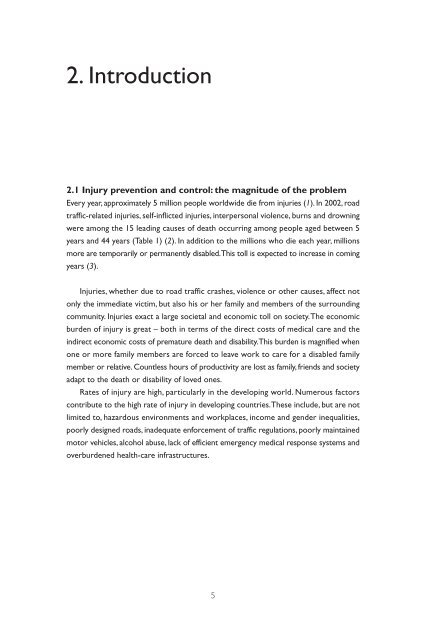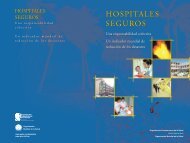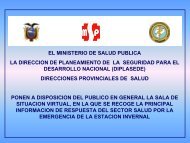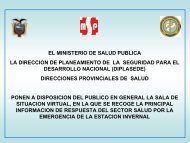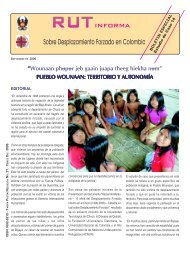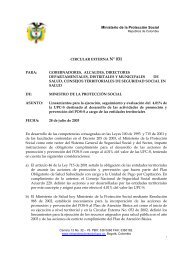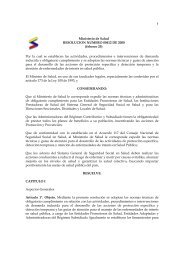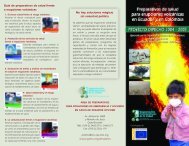Prehospital trauma care systems - World Health Organization
Prehospital trauma care systems - World Health Organization
Prehospital trauma care systems - World Health Organization
You also want an ePaper? Increase the reach of your titles
YUMPU automatically turns print PDFs into web optimized ePapers that Google loves.
2. Introduction<br />
2.1 Injury prevention and control: the magnitude of the problem<br />
Every year, approximately 5 million people worldwide die from injuries (1). In 2002, road<br />
traffic-related injuries, self-inflicted injuries, interpersonal violence, burns and drowning<br />
were among the 15 leading causes of death occurring among people aged between 5<br />
years and 44 years (Table 1) (2). In addition to the millions who die each year, millions<br />
more are temporarily or permanently disabled.This toll is expected to increase in coming<br />
years (3).<br />
Injuries, whether due to road traffic crashes, violence or other causes, affect not<br />
only the immediate victim, but also his or her family and members of the surrounding<br />
community. Injuries exact a large societal and economic toll on society.The economic<br />
burden of injury is great – both in terms of the direct costs of medical <strong>care</strong> and the<br />
indirect economic costs of premature death and disability.This burden is magnified when<br />
one or more family members are forced to leave work to <strong>care</strong> for a disabled family<br />
member or relative. Countless hours of productivity are lost as family, friends and society<br />
adapt to the death or disability of loved ones.<br />
Rates of injury are high, particularly in the developing world. Numerous factors<br />
contribute to the high rate of injury in developing countries.These include, but are not<br />
limited to, hazardous environments and workplaces, income and gender inequalities,<br />
poorly designed roads, inadequate enforcement of traffic regulations, poorly maintained<br />
motor vehicles, alcohol abuse, lack of efficient emergency medical response <strong>systems</strong> and<br />
overburdened health-<strong>care</strong> infrastructures.<br />
5


